Aponogeton L.
lace plant
Aponogetonaceae
Barclaya, Crinum, Cryptocoryne, Damasonium, Echinodorus, Jasarum, Hydrocleys, Ottelia, Potamogeton
tropical and subtropical Africa, Madagascar, Asia, Australia
Numerous species, with the taxonomy updated fequently. Some are:
Aponogeton boivinianus Baill. ex Jum.
A. capuronii H. Bruggen
A. crispus Thunb.
A. distachyos L. f.
A. elongatus F. Muell. ex Benth.
A. euryspermus Hellq. & S.W.L. Jacobs
A. longiplumulosus H. Bruggen
A. madagascariensis (Mirb.) H. Bruggen [also offered under the synonyms A. fenestralis (Pers.) Hook.f.) and A. henkelianus Baum]
A. natans (L.) Engl. & K.Krause
A. rigidifolius H. Bruggen
A. tofus S.W.L. Jacobs
A. ulvaceus Baker
A. undulatus Roxb. (A. stachyosporus de Wit)
A. vanbruggenii Hellq. & S.W.L. Jacobs
Aponogeton distachyos is introduced into parts of eastern Australia and the United States.
A. madagascariensis is established in Mauritius.
not weedy
submergedsubmerged:
(adj) (syn. submersed) under water; submerged below the water surface
 bulb plant with floating and rarely erect leaves (in at least one species)
bulb plant with floating and rarely erect leaves (in at least one species)
Stem tuberous or rhizomatousrhizomatous:
(adj) possessing rhizomes
 . Leaves submergedsubmerged:
. Leaves submergedsubmerged:
(adj) (syn. submersed) under water; submerged below the water surface
 and/or floating, rarely emersedemersed:
and/or floating, rarely emersedemersed:
see emergent
 , in a rosetterosette:
, in a rosetterosette:
(n) a radiating cluster of leaves, usually close to the ground at the base of a plant
 , with or without petiolepetiole:
, with or without petiolepetiole:
(n) the stalk of a leaf
 ; leaf bladeblade:
; leaf bladeblade:
(n) (syn. lamina) the flat, expanded part of a leaf, frond, or petal (excluding, e.g., the petiole)
 usually very long, linear to oblongoblong:
usually very long, linear to oblongoblong:
(adj) two to four times longer than wide, with +/- parallel sides
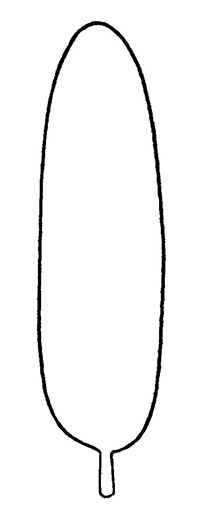 or ellipticelliptical:
or ellipticelliptical:
(adj) in the form of an ellipse (oval)
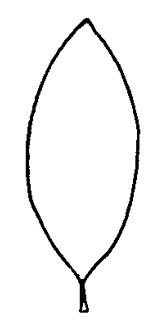 , sometimes wavy, bullatebullate:
, sometimes wavy, bullatebullate:
(adj) having a pimpled or blistered surface
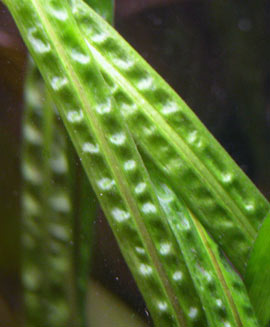 or fenestrate. Flowers borne on elongate, single or forked spikespike:
or fenestrate. Flowers borne on elongate, single or forked spikespike:
(n) an indeterminate, unbranching inflorescence of sessile flowers or flower clusters on a usually elongated axis
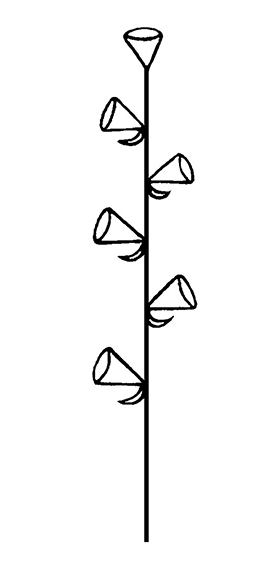 above water level; immature spikespike:
above water level; immature spikespike:
(n) an indeterminate, unbranching inflorescence of sessile flowers or flower clusters on a usually elongated axis
 enveloped by a sheath-like spathespathe:
enveloped by a sheath-like spathespathe:
(n) a large bract or bracts subtending and often enclosing an inflorescence
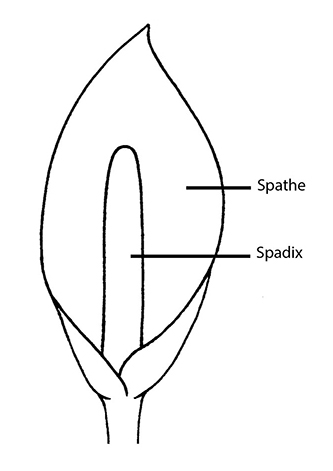 which falls off as inflorescenceinflorescence:
which falls off as inflorescenceinflorescence:
(n) the arrangement of flowers on the floral axis
 opens. Flowers few to numerous, unisexualunisexual:
opens. Flowers few to numerous, unisexualunisexual:
(adj) (of a flower) with either stamens (male) or pistils (female) but not both; consisting of only male or female flowers
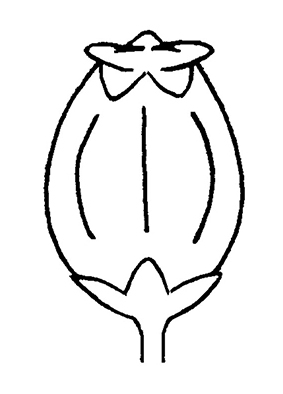 or bisexualbisexual:
or bisexualbisexual:
(adj) having both male and female sexual reproductive structures on one individual or in one flower
 , small, white, yellow, pink or purple, with 2 petals and no sepals.
, small, white, yellow, pink or purple, with 2 petals and no sepals.
typically found in still or running waters, mostly riverine
This distinctive genus of obligate aquatic plants is represented by 57 species in the Old World and is the only member of the family Aponogetonaceae. About a dozen species are commonly cultivated or harvested from the wild for sale in the aquarium hobby, although numerous other species are occasionally traded. Species of Aponogeton naturally undergo an annual resting cycle in which the leaves die back in the cool season, only to be replaced by fresh growth in the warm season. In Madagascar, Australia, and Sri Lanka some species are threatened by over-collecting for the aquarium trade.